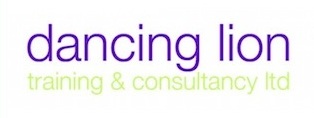Are you measuring what really matters to the customer and how well you deliver on the promises you make to them? There are numerous ways of measuring customer satisfaction now, some of the most widely used are Customer Satisfaction Score, Net Promoter Score and Customer Effort Score.
Let’s look at each:
Customer Satisfaction Score (CSAT)
Customer satisfaction has long been the traditional primary metric for gauging the customer experience in contact centres.
A company’s customer satisfaction score is based on a simple calculation which is the percentage of happy customers compared to the number of customers asked. Typically, customers are asked a single question about their experience and then, depending on the depth of response required, asked to select from options:
1. Good, Bad and Just OK.
2.Very Satisfied/Satisfied/Neutral/Unsatisfied/Very Unsatisfied.
Happy customers are only those who select Good, as clearly Just OK indicates a less than Happy score or in (b) Very Satisfied/Satisfied.
NPS is based on the premise that high customer satisfaction and customer loyalty are inextricably linked.
A limitation of this method is that it focuses the customer on a single incident or interaction, rather than their relationship with the organization. However, it has its uses and can effectively measure a range of elements, such as within a training programme, the achievement of stated objectives, content, knowledge and approachability of the trainer, environment, catering etc.
Research by Fred Reichfield and more recently Dixon et al (2010) suggests that ‘delighting your customers’ or exceeding their expectations may not be the best strategy rather concentrating on fulfilling basic promises and reducing the effort or the work they do to get their problems solved does.
Reichfield developed the Customer Effort Score model, which is discussed below.
 Net Promoter Score (NPS)
Net Promoter Score (NPS)
Net promoter score (NPS) is a survey that has gained in popularity over the last 10 years. It measures the loyalty of a company’s customer base. It is sent to customers who are asked to score a recent interaction that they have had with the organization.
Customers are asked to score their satisfaction response on a scale of 0 – 10, (where 0 is not at all and 10 is always).
Typically, customers are asked a simple question:
How likely is it you would recommend us to a friend? Those that score:
– 0 – 6 are categorized as Detractors
– 7 – 8 are categorized as Passives
– 9 – 10 are categorized Promotors
The categories are defined as:
– Promoters – loyal customers who actively promote the company and give constructive criticism back to the company to see it improve.
– Passives – customers who are not enthusiastic or confident about the company. They will leave for another supplier and are waiting for better offer to come along.
– Detractors– customers who are unhappy with the company and will actively voice their dissatisfaction, damaging the reputation of the company.
A final NPS percentage score is arrived at by taking the % of categories and dividing it by the total number of surveys.
For example, if the total number of surveys is 26
– 15 Promoters = 15 divided by 26 x 100 = 57.69
– 7 Passives (not included in final calculation)
– 4 Detractors = 4 divided by 26 x 100 = 15.38
Final calculation is 57.6 – 15.3 = 42.3 NPS
It is worth bearing in mind that dissatisfied customers are more likely to respond in a survey than satisfied customers so if competitors are known to be achieving an NPS, careful calculation will be required to ensure a satisfactory survey result.
The Customer Effort Score (CES)
The Customer Effort Score (CES) is a powerful metric to measure customer service satisfaction with a single question. Dixon, Toman and Delisi’s research found that Customer Loyalty is driven by how well a company delivers on its basic promises and solves day-to-day problems, not on how spectacular its service experience might be. “Most customers don’t want to be “wowed”; they want an effortless experience”. They also argue that customers are far more likely to punish a company for bad service than to reward it for good service.
There are currently several versions available of the CES.
The first version asks the customer:
“How much effort did you personally have to put forth to handle your request?” Customers respond using a 5-point scale from very low effort (1) to a very high effort (5).
A second version provides an agreement/disagreement rating to the question:
“The organisation made it easy for me to handle my issue”
A third variation asks:
“Overall, how easy was it to get the help you wanted today?”
The overall rationale behind the metric is that service organisations create loyal customers by reducing customer effort.
Summary
All of these systems can be effective, depending upon the organisation and its objectives. Whichever method or combination of methods you use, assessing the appropriate measures and putting in place the right Key Performance Indicators (KPIs) is essential for long term success.

Dancing lion have a strong track record in assisting organisations to implement customer satisfaction initiatives.
To find out more, phone 0044 (0)1908 644791, email, visit their Website

 Net Promoter Score (NPS)
Net Promoter Score (NPS)




